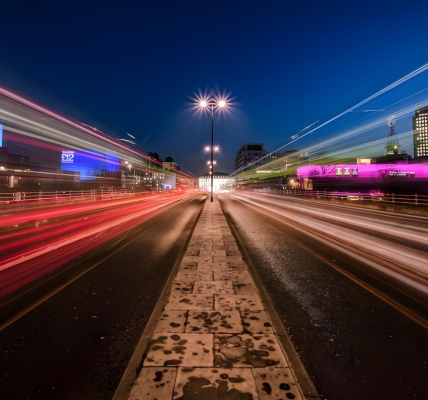In the realm of outdoor adventures, the significance of a portable headlamp cannot be overstated. As dusk descends and natural light wanes, the ability to illuminate your surroundings becomes paramount. Whether you are hiking through dense forests, setting up camp in the twilight, or navigating rocky terrains, a headlamp provides a reliable source of light that allows for hands-free operation.
This is particularly crucial when you need to manage equipment, prepare food, or even tend to a first-aid situation. Unlike traditional flashlights, which require one hand to hold, a headlamp frees both hands, enabling you to perform tasks with ease and efficiency. The convenience of having light directed exactly where you are looking enhances safety and reduces the risk of accidents in unfamiliar environments.
Moreover, the versatility of portable headlamps makes them indispensable for a variety of outdoor activities. From camping and hiking to fishing and climbing, these devices adapt seamlessly to different scenarios. They are lightweight and compact, making them easy to pack and carry without adding significant weight to your gear.
Additionally, many modern headlamps are designed with durability in mind, often featuring water-resistant and impact-resistant properties that ensure they can withstand the rigors of outdoor use. As such, investing in a quality portable headlamp not only enhances your outdoor experience but also contributes to your overall safety and preparedness in the wild.
Features to Look for in a Quality Portable Headlamp
When selecting a portable headlamp, several key features should be taken into account to ensure you choose a model that meets your specific needs. First and foremost, consider the brightness level, typically measured in lumens. A higher lumen count translates to brighter light output, which is essential for illuminating larger areas or navigating challenging terrains.
However, brightness is not the only factor; beam distance is equally important. A headlamp with a focused beam can project light further ahead, making it easier to see obstacles in your path from a distance. Additionally, many headlamps offer multiple brightness settings, allowing users to adjust the intensity based on their immediate requirements and conserve battery life when full brightness is unnecessary.
Another critical feature to evaluate is battery life and type. Some headlamps operate on disposable batteries, while others come with rechargeable options. Rechargeable models are often more convenient for extended trips, as they can be powered up using solar chargers or portable power banks.
Furthermore, look for headlamps Zifoto with battery indicators that inform you of remaining power levels, preventing unexpected darkness during crucial moments. Comfort and fit are also vital considerations; an adjustable strap and lightweight design can make a significant difference during prolonged use. A well-fitted headlamp will stay securely in place without causing discomfort, allowing you to focus on your adventure rather than adjusting your gear.
How to Choose the Right Brightness and Beam Distance for Your Needs
Choosing the right brightness and beam distance for your portable headlamp is essential for optimizing its performance during outdoor activities. The brightness you require largely depends on the nature of your adventures. For instance, if you plan on hiking in well-lit areas or performing tasks close at hand, a lower lumen count may suffice.
Conversely, if you intend to traverse dark trails or navigate through dense woods, opting for a headlamp with higher lumens—typically between 200 to 1000—will provide the necessary illumination to see further ahead and identify potential hazards. It’s also worth noting that some headlamps come equipped with adjustable brightness settings, allowing you to customize the light output based on your immediate environment. Beam distance is another critical factor that complements brightness.
This measurement indicates how far the light can effectively reach before it diminishes into darkness. For activities such as night hiking or climbing, a longer beam distance—often exceeding 100 meters—is advantageous as it allows you to spot obstacles well in advance. On the other hand, if your primary use involves close-up tasks like cooking or reading at camp, a shorter beam distance may be adequate.
Many modern headlamps feature a combination of flood and spot beams, providing versatility for various situations. By understanding your specific needs and the environments you will encounter, you can make an informed decision that enhances your outdoor experience.
Tips for Using Your Portable Headlamp Effectively
To maximize the utility of your portable headlamp during outdoor excursions, employing effective usage techniques is essential. First and foremost, familiarize yourself with the different settings and features of your headlamp before heading out into the wilderness. Understanding how to switch between brightness levels or adjust the beam angle can save valuable time when you need light most urgently.
Additionally, practice using your headlamp in low-light conditions at home or in familiar surroundings to build confidence in its operation. This preparation will help you feel more comfortable when navigating unfamiliar terrains under the cover of darkness. Another important tip is to position your headlamp correctly for optimal visibility.
When wearing the headlamp, ensure it is angled slightly downward; this not only illuminates your immediate path but also reduces glare that can be distracting or disorienting. If you find yourself needing to illuminate an area without wearing the headlamp on your head—such as when setting up camp—consider using it as a stationary light source by placing it on a flat surface or hanging it from a nearby branch. Lastly, always carry extra batteries or a portable charger if your model is rechargeable; this precaution ensures that you won’t be left in the dark during critical moments of your adventure.
The Benefits of Hands-Free Lighting for Camping, Hiking, and More
The advantages of hands-free lighting provided by portable headlamps extend far beyond mere convenience; they significantly enhance safety and efficiency during outdoor activities such as camping and hiking. One of the most notable benefits is the ability to perform tasks without needing to juggle a flashlight or other light source. Whether you’re cooking over a campfire, setting up a tent, or navigating through rugged terrain, having both hands free allows for greater dexterity and control.
This hands-free capability is particularly beneficial in situations where precision is required—such as tying knots or managing gear—where fumbling with equipment can lead to frustration or accidents. Moreover, hands-free lighting fosters a sense of freedom and exploration during nighttime adventures. With a reliable source of illumination strapped securely to your forehead, you can move more confidently through dark environments without constantly worrying about where to point your light.
This freedom encourages spontaneity; whether you’re exploring hidden trails or enjoying stargazing sessions away from city lights, a portable headlamp allows you to embrace the night fully. Additionally, many models are designed with lightweight materials that ensure comfort during extended wear, making them an ideal companion for long hikes or multi-day camping trips where mobility is key.
Safety Considerations When Using a Portable Headlamp
While portable headlamps are invaluable tools for outdoor enthusiasts, it is crucial to prioritize safety when using them in various environments. One primary consideration is ensuring that your headlamp is adequately secured before embarking on any adventure. A loose-fitting headlamp can shift unexpectedly while you’re moving, potentially causing disorientation or distraction at critical moments.
To mitigate this risk, adjust the straps for a snug fit that remains comfortable throughout your activities. Additionally, regularly check the condition of your headlamp before each trip; inspect for any signs of wear or damage that could compromise its functionality. Another safety aspect involves being mindful of your surroundings while using a headlamp at night.
Bright lights can temporarily impair night vision for both yourself and others nearby; therefore, it’s essential to avoid shining your headlamp directly into other people’s eyes or reflective surfaces that could cause glare. When hiking in groups or near campsites, consider using lower brightness settings or red light modes—if available—to minimize disruption while still providing adequate illumination for navigation. Furthermore, always carry backup lighting options; having an additional flashlight or lantern can serve as a safety net should your primary light source fail unexpectedly.
Top Picks for Portable Headlamps on the Market
As the market for portable headlamps continues to expand, several standout models have emerged that cater to various needs and preferences among outdoor enthusiasts. One highly regarded option is the Petzl Actik Core Headlamp, known for its versatility and impressive brightness levels reaching up to 600 lumens. This model features multiple lighting modes—including red light—to preserve night vision while offering an excellent balance between flood and spot beams for diverse activities such as hiking and camping.
Its rechargeable battery adds convenience for extended trips where access to power may be limited. Another noteworthy contender is the Black Diamond Spot 400 Headlamp, which combines robust performance with user-friendly features. With an output of 400 lumens and an impressive beam distance of 100 meters, this headlamp excels in illuminating both close-up tasks and distant paths alike.
Its waterproof design ensures reliability in various weather conditions, making it suitable for adventurous souls who don’t shy away from rain or snow. Additionally, its intuitive interface allows users to switch between modes effortlessly—a feature that enhances usability during dynamic outdoor scenarios. In conclusion, investing in a quality portable headlamp is essential for anyone who enjoys outdoor adventures.
By understanding their importance, features to look for, how to choose appropriate brightness levels and beam distances, effective usage tips, benefits of hands-free lighting, safety considerations, and exploring top market options, outdoor enthusiasts can enhance their experiences while ensuring safety and efficiency in their pursuits under the stars.











